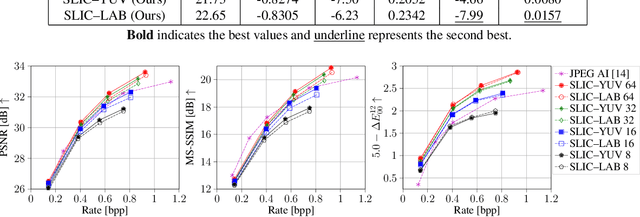Mahadev Prasad Panda
Human-inspired Explanations for Vision Transformers and Convolutional Neural Networks
Aug 20, 2024Abstract:We introduce Foveation-based Explanations (FovEx), a novel human-inspired visual explainability (XAI) method for Deep Neural Networks. Our method achieves state-of-the-art performance on both transformer (on 4 out of 5 metrics) and convolutional models (on 3 out of 5 metrics), demonstrating its versatility. Furthermore, we show the alignment between the explanation map produced by FovEx and human gaze patterns (+14\% in NSS compared to RISE, +203\% in NSS compared to gradCAM), enhancing our confidence in FovEx's ability to close the interpretation gap between humans and machines.
FovEx: Human-inspired Explanations for Vision Transformers and Convolutional Neural Networks
Aug 04, 2024Abstract:Explainability in artificial intelligence (XAI) remains a crucial aspect for fostering trust and understanding in machine learning models. Current visual explanation techniques, such as gradient-based or class-activation-based methods, often exhibit a strong dependence on specific model architectures. Conversely, perturbation-based methods, despite being model-agnostic, are computationally expensive as they require evaluating models on a large number of forward passes. In this work, we introduce Foveation-based Explanations (FovEx), a novel XAI method inspired by human vision. FovEx seamlessly integrates biologically inspired perturbations by iteratively creating foveated renderings of the image and combines them with gradient-based visual explorations to determine locations of interest efficiently. These locations are selected to maximize the performance of the model to be explained with respect to the downstream task and then combined to generate an attribution map. We provide a thorough evaluation with qualitative and quantitative assessments on established benchmarks. Our method achieves state-of-the-art performance on both transformers (on 4 out of 5 metrics) and convolutional models (on 3 out of 5 metrics), demonstrating its versatility among various architectures. Furthermore, we show the alignment between the explanation map produced by FovEx and human gaze patterns (+14\% in NSS compared to RISE, +203\% in NSS compared to GradCAM). This comparison enhances our confidence in FovEx's ability to close the interpretation gap between humans and machines.
A Study on the Effect of Color Spaces in Learned Image Compression
Jun 19, 2024



Abstract:In this work, we present a comparison between color spaces namely YUV, LAB, RGB and their effect on learned image compression. For this we use the structure and color based learned image codec (SLIC) from our prior work, which consists of two branches - one for the luminance component (Y or L) and another for chrominance components (UV or AB). However, for the RGB variant we input all 3 channels in a single branch, similar to most learned image codecs operating in RGB. The models are trained for multiple bitrate configurations in each color space. We report the findings from our experiments by evaluating them on various datasets and compare the results to state-of-the-art image codecs. The YUV model performs better than the LAB variant in terms of MS-SSIM with a Bj{\o}ntegaard delta bitrate (BD-BR) gain of 7.5\% using VTM intra-coding mode as the baseline. Whereas the LAB variant has a better performance than YUV model in terms of CIEDE2000 having a BD-BR gain of 8\%. Overall, the RGB variant of SLIC achieves the best performance with a BD-BR gain of 13.14\% in terms of MS-SSIM and a gain of 17.96\% in CIEDE2000 at the cost of a higher model complexity.
SLIC: A Learned Image Codec Using Structure and Color
Jan 30, 2024



Abstract:We propose the structure and color based learned image codec (SLIC) in which the task of compression is split into that of luminance and chrominance. The deep learning model is built with a novel multi-scale architecture for Y and UV channels in the encoder, where the features from various stages are combined to obtain the latent representation. An autoregressive context model is employed for backward adaptation and a hyperprior block for forward adaptation. Various experiments are carried out to study and analyze the performance of the proposed model, and to compare it with other image codecs. We also illustrate the advantages of our method through the visualization of channel impulse responses, latent channels and various ablation studies. The model achieves Bj{\o}ntegaard delta bitrate gains of 7.5% and 4.66% in terms of MS-SSIM and CIEDE2000 metrics with respect to other state-of-the-art reference codecs.
 Add to Chrome
Add to Chrome Add to Firefox
Add to Firefox Add to Edge
Add to Edge